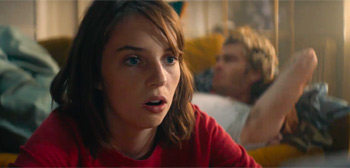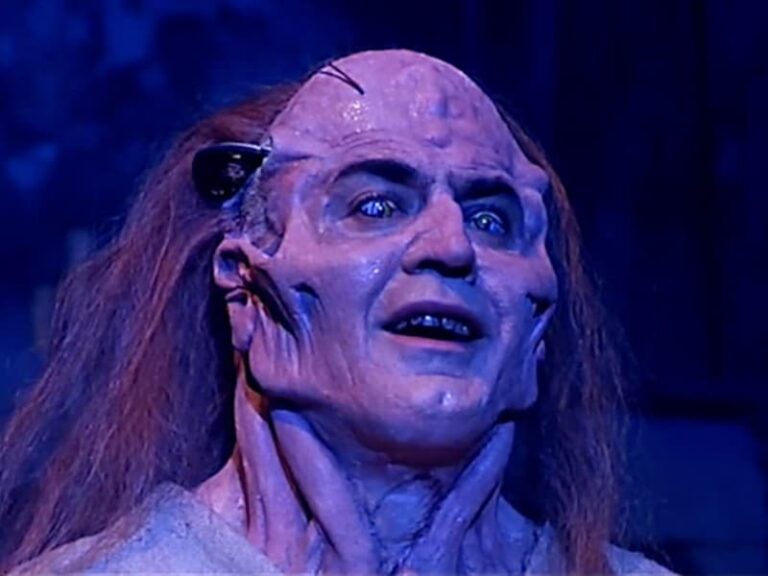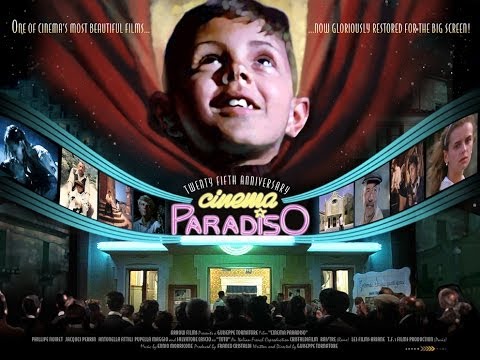Nightstream Film Festival 2020: BLOODY HELL and DINNER IN AMERICA
Everybody’s sick to death of hearing about these “unprecedented times”, and nobody more so than film festival organisers. As rising Covid cases started to cancel festivals at the start of the year, festivals were faced with the decision of moving online, or scrapping this year’s edition outright, creating new challenges that may have made films more accessible to the public – but also robbed filmmakers of the chance to have their films shown on the big screen.
As several horror festivals have moved online, it’s become apparent that these events have been hit the hardest, as you can’t replicate the communal joy of gasping and guffawing at the horrifying, depraved, and occasionally quite sleazy films that populate their lineups at home. Nightstream Film Festival, a collaboration between the Boston Underground Film Festival, Brooklyn Horror Film Festival, North Bend Film Festival, the Overlook Film Festival, and the Popcorn Frights Film Festival, has been put together by people with a passion for genre cinema, who would likely be quickest to say that these films would be better experienced with a packed crowd.
This is a thought I couldn’t dislodge from my mind while watching the two films I’ve reviewed from the festival, as part of Film Inquiry’s coverage of Nightstream (my colleague Clement Tyler Obropta will be picking up many more). In fact, it was all I could think about while watching the better of the two films…
Bloody Hell (Dir: Alister Grierson)
As commendable as the efforts have been to put together the inaugural Nightstream festival, it’s hard to replicate the thrills of watching a midnight movie at home, without a rapturous audience sat alongside you. The Aussie/Finnish thriller Bloody Hell is the kind of movie that would thrive in that environment – a darkly comic and delightfully gruesome survival tale that succeeds on a purely primal level, overcoming its familiarity with a gleeful irreverence seemingly tailor-made for those sleep-deprived festival audiences in the middle of a horror all-nighter. It’s a shame it won’t be seen in the way it was clearly intended.
After foiling a bank robbery in a way that ended badly, Rex (Ben O’Toole) becomes a national celebrity. Made anxious by the attention, he decides to get away from it all and flies off to Finland – where, not long after arriving, he’s knocked unconscious and taken to the basement of a remote property. Missing a leg and with no idea how he got there, his mission to escape this sinister family home begins.
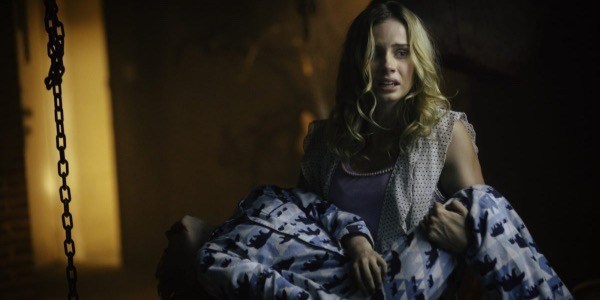
The film has some annoying stylistic tics that you can imagine working with a genre-attuned festival audience, but fall flat when watched at home. None is more intrusive than the personification of Rex’s interior monologue, and having O’Toole give a cockier performance narrating the action from the sidelines, a hangover from the post-Tarantino wave of mid 90’s cinema that falters because the dialogue veers cheesy rather than cool. Of course, it sometimes plays this up for laughs, such as in a moment where Rex rehearses his action movie kiss-off line in the midst of the robbery – but most of the time, it feels clunky and outdated, with jokes about subjects including veganism likely to generate more groans than guffaws.
Despite this, O’Toole’s charisma manages to keep the whole thing from feeling cringe-inducing, walking a fine line between portraying Rex as an action hero badass and a dork with delusions of grandeur – like John McClane and Mac from It’s Always Sunny rolled into one. The increasingly nasty directions the story takes, as we learn more about the dark secret in the family holding Rex hostage, are better left unspoiled, but once again, I can imagine the hypothetical festival audience taking delight in the left-field direction it heads in. That it manages to hold together two disparate genres, a heist thriller in flashback and something more repugnant in the present, is commendable, and certainly makes the story memorable despite a boisterous post-Tarantino tone that feels somewhat outdated.
All in all, it makes Bloody Hell that rare thing: a strange concoction of a genre-blending thriller, told in an imitation of a distinctive voice that undermines its unique qualities.
Dinner in America (Dir: Adam Rehmeier)
You’ve heard the story before; a brooding delinquent on the wrong side of the law crosses paths with a girl troubled by her home life before they head on a spiral of violence and mayhem together. Director Adam Rehmeier’s Sundance competition title Dinner in America has an offbeat sweetness to it that differentiates itself from your average Bonnie and Clyde clone, taking its time to establish the suffocating suburban setting and unlikely blossoming relationship before the lovers head out on the lam.
What’s unfortunate is that the tenderness beneath the nihilism dissuades the film from finding its footing until it starts more openly emulating other crime spree movies. This is a character comedy that feels stretched out because we all know the direction it is heading, with the delicate but slight innovations only stalling the film before it sets off to a more familiar yet infinitely more entertaining destination.
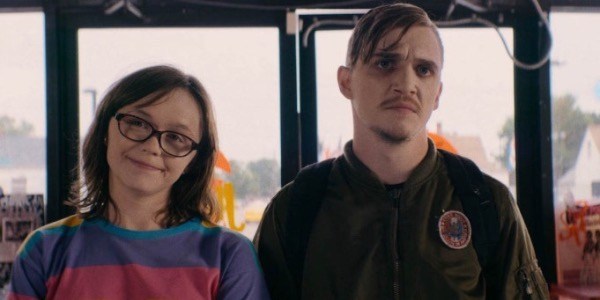
Simon (Kyle Gallner), the mysterious singer of an underground punk band, is in constant trouble with the law for his recurring penchant for arson. Patty (Emily Skeggs) is a die-hard fan of his band and routinely sends risqué fan mail his way, even though she’s never seen his face beneath the mask he wears on stage. While he’s on the run from the cops, the pair’s paths cross, and he finds himself hiding away at her family home – where a relationship blossoms and Patty is given a brief escape from her humdrum existence applying for minimum wage work.
The film’s second half, in which Simon convinces Patty to not settle for a lifetime of menial jobs in an anonymous suburb to actually live in the moment, is when Dinner in America’s specific brand of dark-hearted, but ultimately sweet-natured, comedy finally clicks into place. Before then, it seems to be leaning too hard on a specific brand of quirk associated with Sundance movies of this type, never quite finding the balance between offbeat charm and surreal provocation.
The latter aspect only ever feels unsavoury in the characterisation of Patty, who despite being referred to as 20 in the screenplay, is characterised like a teenage girl; from being bullied by some nearby students, to having to ask her parents for permission to do anything, the character feels written as younger than she actually is, rendering the central relationship far more uncomfortable than it has any reason to be. Of course, a lovers on the lam film in the style of Bonnie and Clyde or Natural Born Killers is designed to make the audience feel uncomfortable – it’s just here, that discomfort doesn’t feel wholly intentional.
Dinner in America is uneven but not entirely enjoyable, even if it only truly works when acting as a retread of films you’d rather be watching instead.
Stay tuned to Film Inquiry for more Nightstream reviews.
Does content like this matter to you?
Become a Member and support film journalism. Unlock access to all of Film Inquiry`s great articles. Join a community of like-minded readers who are passionate about cinema – get access to our private members Network, give back to independent filmmakers, and more.
Join now!
